Experience Tumblr like never before
Innovation - Blog Posts
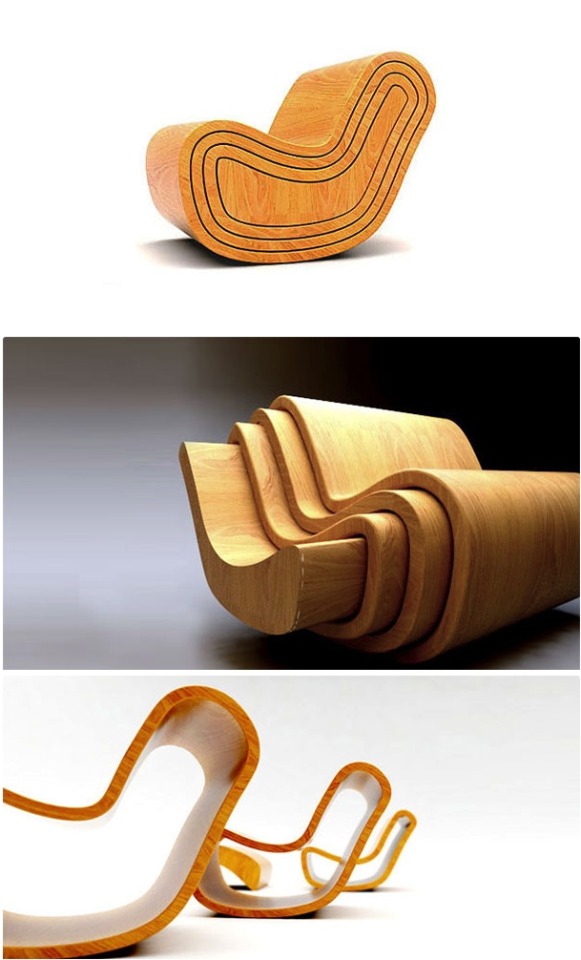
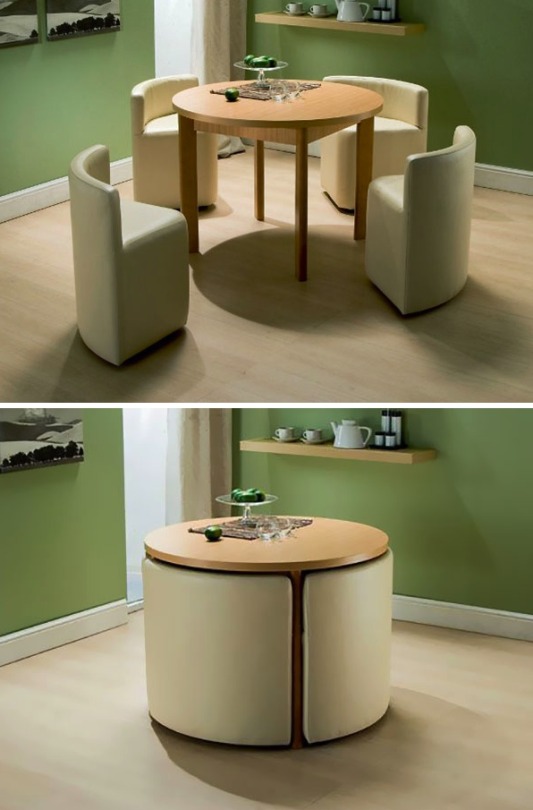

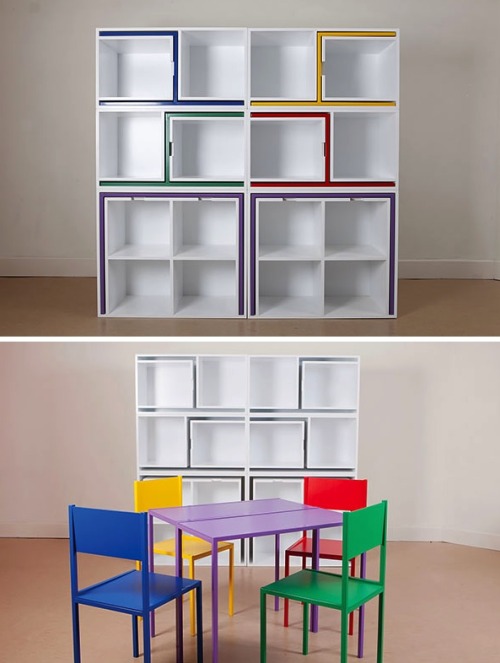
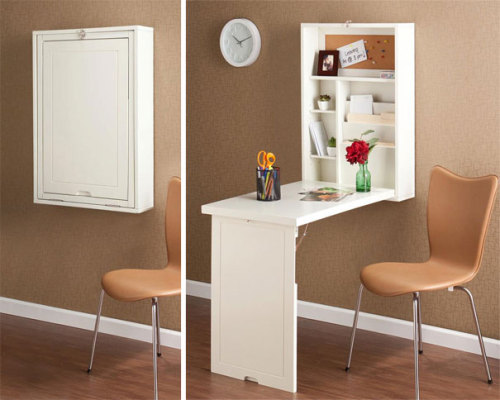

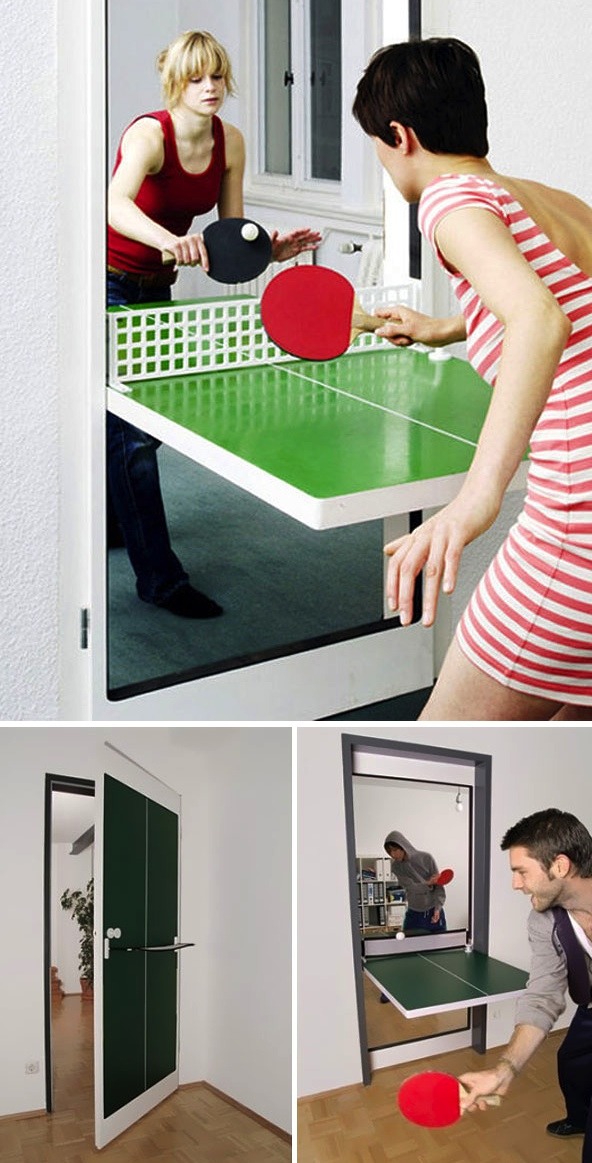


Space-Saving Design Ideas
From Racing Suits to Robotic Gloves: How to Gear Up with NASA Technology
Did you know you are surrounded by NASA technology? From your apartment building to the doctor’s office, and even in your cellphone camera, there is more space in your life than you think!
In the latest edition of Spinoff, we are introducing dozens of new ways NASA technology could cross your path. Whether you need an extra “hand” on the production line or a weatherproof jacket, check out how to gear up with technology made for space.
Grip-Strengthening Glove

Robots are crucial to exploring space and other planets – they could even support astronauts and form the advance party for places humans have yet to reach. But the human machine is hard to replicate.
A collaboration with General Motors helped us build Robonaut 2 – and the design for this robot’s hands has been adapted into a robotic glove that helps manufacturing employees, such as automobile workers, reduce injuries and improve quality control.
The Swedish company Bioservo used the Robo-Glove technology to create the world’s first industrial-strength robotic glove for factory workers who perform repetitive manual tasks.
The Ironhand glove adds force to the user’s grip with artificial tendons and pressure sensors on the palm and the fingers.
The result? Reduced strain on the user’s own tendons and muscles, meaning fewer workplace stress injuries and better comfort for workers.
Temperature-Control Fabrics

Spacesuits need major insulation and temperature control to protect astronauts on extravehicular activities, aka spacewalks. To help solve this, we created a phase-change material with help from the Triangle Research and Development Corporation.
With funding from a NASA Small Business Innovation Research contract, Triangle incorporated the material into a fabric glove insert that could maintain a steady temperature by absorbing and releasing heat, ensuring it feels just right.
While the invention never made it to orbit, it did make it into the driver’s seat.
Outlast Technologies exclusively licensed the material from Triangle and has incorporated it into outdoor gear, bedding, and now – auto racing suits with help from Cambridge, England-based Walero.

Due to extreme temperatures in the cockpit, drivers in almost every major racing championship wear Walero for its cooling properties. Cristiana Oprea (pictured) wears it while driving for the European Rally Championship. Credit: Walero
The race undergarments, bonded with fire-retardant material for added protection, help drivers maintain a lower core temperature and heart rate, which means fewer mistakes and better lap times.
The suits have been sold to both amateur racers and professional NASCAR drivers.
Lightweight Rain Jackets

The superinsulating material that makes up space blankets is one of our most ubiquitous spinoffs. Found everywhere from inside the walls and roofs of buildings to cryogenic tanks and MRI machines, radiant barrier technology was first created to insulate spacesuits and spacecraft. And now this NASA spinoff can be found in weatherproof jackets as well.
Inspired by her passion to run following a series of surgeries to help correct a life-threatening injury, Hema Nambiar launched her Larchmont, New York, start-up company 13-One. To create her jacket, she worked with Advanced Flexible Materials Inc.’s brand Heatsheets. The brand was already marketing products like the space blankets traditionally distributed after races to prevent dangerous drops in temperature.

The 13-One jackets are designed to be warm and weatherproof, but their thin, reflective lining lets them also be lightweight and easily portable. Credit: Lourenso Ramautar, Out of New York Studio
The resulting line of jackets has a black exterior and a lining to reflect body heat. They weigh less than a pound, are wind- and water-resistant, and easily pack into a small, built-in pouch.
Want to check out more NASA spinoffs? Be sure to find us on spinoff.nasa.gov and on Twitter.
Interested in licensing your own NASA technologies? Check out the NASA Technology Transfer program at technology.nasa.gov.
Make sure to follow us on Tumblr for your regular dose of space!
6 Ways NASA Technology Makes You Healthier
An important part of our mission is keeping astronauts strong and healthy during stays in space, but did you know that our technology also helps keep you healthy? And the origins of these space innovations aren’t always what you’d expect.
As we release the latest edition of NASA Spinoff, our yearly publication that celebrates all the ways NASA technology benefits us here on Earth, let’s look at some ways NASA is improving wellness for astronauts—and everyone else.
1. Weightless weight-lifting

Without gravity to work against, astronauts lose bone and muscle mass in space. To fight it, they work out regularly. But to get them a good burn, we had to get creative. After all, pumping iron doesn’t do much good when the weights float.
The solution? Elastic resistance. Inventor Paul Francis was already working on a portable home gym that relied on spiral-shaped springs made of an elastic material. He thought the same idea would work on the space station and after additional development and extensive testing, we agreed.
Our Interim Resistive Exercise Device launched in 2000 to help keep astronauts fit. And Francis’ original plan took off too. The technology perfected for NASA is at the heart of the Bowflex Revolution as well as a new line of handheld devices called OYO DoubleFlex, both of which enable an intensive—and extensive—workout, right at home.
2. Polymer coating keeps hearts beating

A key ingredient in a lifesaving treatment for many patients with congestive heart failure is made from a material a NASA researcher stumbled upon while working on a supersonic jet in the 1990s.
Today, a special kind of pacemaker that helps synchronize the left and right sides of the heart utilizes the unique substance known as LaRC-SI. The strong material can be cast extremely thin, which makes it easier to insert in the tightly twisted veins of the heart, and because it insulates so well, the pacemaker’s electric pulses go exactly where they should.
Since it was approved by the FDA in 2009, the device has been implanted hundreds of thousands of times.
3. Sutures strong enough for interplanetary transport

Many people mistakenly think we created Teflon. Not true: DuPont invented the unique polymer in 1938. But an innovative new way to use the material was developed to help us transport samples back from Mars and now aids in stitching up surgery patients.
Our scientists would love to get pristine Martian samples into our labs for more advanced testing. One complicating factor? The red dust makes it hard to get a clean seal on the sample container. That means the sample could get contaminated on its way back to Earth.
The team building the cannister had an idea, but they needed a material with very specific properties to make it work. They decided to use Polytetrafluoroethylene (that’s the scientific name for Teflon), which works really well in space.
The material we commonly recognize as Teflon starts as a powder, and to transform it into a nonstick coating, the powder gets processed a certain way. But process it differently, and you can get all kinds of different results.
For our Mars sample return cannister prototype, the powder was compressed at high pressures into a block, which was then forced through an extruder. (Imagine pressing playdough through a mold). It had never been done before, but the end result was durable, flexible and extremely thin: exactly what we needed.
And since the material can be implanted safely in the human body—it was also perfect as super strong sutures for after surgery.
4. Plant pots that clean the air

It may surprise you, but the most polluted air you breathe is likely the air inside your home and office. That’s especially true these days with energy-efficient insulation: the hot air gets sealed in, but so do any toxins coming off the paint, furniture, cooking gas, etc.
This was a problem NASA began worrying about decades ago, when we started planning for long duration space missions. After all, there’s no environment more insulated than a spaceship flying through the vacuum of space.
On Earth, plants are a big part of the “life support” system cleaning our air, so we wondered if they could do the same indoors or in space.
The results from extensive research surprised us: we learned the most important air scrubbing happens not through a plant’s leaves, but around its roots. And now you can get the cleanest air out of your houseplants by using a special plant pot, available online, developed with that finding in mind: it maximizes air flow through the soil, multiplying the plant’s ability to clean your air.
5. Gas sensor detects pollution from overhead

Although this next innovation wasn’t created with pollution in mind, it’s now helping keep an eye on one of the biggest greenhouse gasses: methane.
We created this tiny methane “sniffer” to help us look for signs of life on Mars. On Earth, the biggest source of methane is actually bacteria, so when one of our telescopes on the ground caught a glimpse of the gas on Mars, we knew we needed to take a closer look.
We sent this new, extremely sensitive sensor on the Curiosity Rover, but we knew it could also be put to good use here on our home planet. We adapted it, and today it gets mounted on drones and cars to quickly and accurately detect gas leaks and methane emissions from pipelines, oil wells and more.
The sensor can also be used to better study emissions from swamps and other natural sources, to better understand and perhaps mitigate their effects on climate change.
6. DNA “paint” highlights cellular damage

There’s been a lot of news lately about DNA editing: can genes be changed safely to make people healthier? Should they be?
As scientists and ethicists tackle these big questions, they need to be sure they know exactly what’s changing in the genome when they use the editing tools that already exist.
Well, thanks to a tool NASA helped create, we can actually highlight any abnormalities in the genetic code with special fluorescent “paint.”
But that’s not all the “paint” can do. We actually created it to better understand any genetic damage our astronauts incurred during their time in space, where radiation levels are far higher than on Earth. Down here, it could help do the same. For example, it can help doctors select the right cancer treatment by identifying the exact mutation in cancer cells.
You can learn more about all these innovations, and dozens more, in the 2019 edition of NASA Spinoff. Read it online or request a limited quantity print copy and we’ll mail it to you!
Optical Communications: Explore Lasers in Space

When we return to the Moon, much will seem unchanged since humans first arrived in 1969. The flags placed by Apollo astronauts will be untouched by any breeze. The footprints left by man’s “small step” on its surface will still be visible across the Moon’s dusty landscape.
Our next generation of lunar explorers will require pioneering innovation alongside proven communications technologies. We’re developing groundbreaking technologies to help these astronauts fulfill their missions.
In space communications networks, lasers will supplement traditional radio communications, providing an advancement these explorers require. The technology, called optical communications, has been in development by our engineers over decades.

Optical communications, in infrared, has a higher frequency than radio, allowing more data to be encoded into each transmission. Optical communications systems also have reduced size, weight and power requirements. A smaller system leaves more room for science instruments; a weight reduction can mean a less expensive launch, and reduced power allows batteries to last longer.

On the path through this “Decade of Light,” where laser joins radio to enable mission success, we must test and demonstrate a number of optical communications innovations.

The Laser Communications Relay Demonstration (LCRD) mission will send data between ground stations in Hawaii and California through a spacecraft in an orbit stationary relative to Earth’s rotation. The demo will be an important first step in developing next-generation Earth-relay satellites that can support instruments generating too much data for today’s networks to handle.

The Integrated LCRD Low-Earth Orbit User Modem and Amplifier-Terminal will provide the International Space Station with a fully operational optical communications system. It will communicate data from the space station to the ground through LCRD. The mission applies technologies from previous optical communications missions for practical use in human spaceflight.

In deep space, we’re working to prove laser technologies with our Deep Space Optical Communications mission. A laser’s wavelength is smaller than radio, leaving less margin for error in pointing back at Earth from very, very far away. Additionally, as the time it takes for data to reach Earth increases, satellites need to point ahead to make sure the beam reaches the right spot at the right time. The Deep Space Optical Communications mission will ensure that our communications engineers can meet those challenges head-on.

An integral part of our journey back to the Moon will be our Orion spacecraft. It looks remarkably similar to the Apollo capsule, yet it hosts cutting-edge technologies. NASA’s Laser Enhanced Mission Communications Navigation and Operational Services (LEMNOS) will provide Orion with data rates as much as 100 times higher than current systems.
LEMNOS’s optical terminal, the Orion EM-2 Optical Communications System, will enable live, 4K ultra-high-definition video from the Moon. By comparison, early Apollo cameras filmed only 10 frames per second in grainy black-and-white. Optical communications will provide a “giant leap” in communications technology, joining radio for NASA’s return to the Moon and the journey beyond.

NASA’s Space Communications and Navigation program office provides strategic oversight to optical communications research. At NASA’s Goddard Space Flight Center in Greenbelt, Maryland, the Exploration and Space Communications projects division is guiding a number of optical communications technologies from infancy to fruition. If you’re ever near Goddard, stop by our visitor center to check out our new optical communications exhibit. For more information, visit nasa.gov/SCaN and esc.gsfc.nasa.gov.
Sixty Years of Exploration, Innovation, and Discovery!

Exactly sixty years ago today, we opened our doors for the first time. And since then, we have opened up a universe of discovery and innovation.
There are so many achievements to celebrate from the past six decades, there’s no way we can go through all of them. If you want to dive deeper into our history of exploration, check out NASA: 60 Years and Counting.
In the meantime, take a moonwalk down memory lane with us while we remember a few of our most important accomplishments from the past sixty years!

In 1958, President Eisenhower signed the National Aeronautics and Space Act, which effectively created our agency. We officially opened for business on October 1.
To learn more about the start of our space program, watch our video: How It All Began.

Alongside the U.S. Air Force, we implemented the X-15 hypersonic aircraft during the 1950s and 1960s to improve aircraft and spacecraft.
The X-15 is capable of speeds exceeding Mach 6 (4,500 mph) at altitudes of 67 miles, reaching the very edge of space.
Dubbed the “finest and most productive research aircraft ever seen,” the X-15 was officially retired on October 24, 1968. The information collected by the X-15 contributed to the development of the Mercury, Gemini, Apollo, and Space Shuttle programs.
To learn more about how we have revolutionized aeronautics, watch our Leading Edge of Flight video.

On July 20, 1969, Neil Armstrong and Buzz Aldrin became the first humans to walk on the moon. The crew of Apollo 11 had the distinction of completing the first return of soil and rock samples from beyond Earth.
Astronaut Gene Cernan, during Apollo 17, was the last person to have walked on the surface of the moon. (For now!)
The Lunar Roving Vehicle was a battery-powered rover that the astronauts used during the last three Apollo missions.
To learn more about other types of technology that we have either invented or improved, watch our video: Trailblazing Technology.

Our long-term Earth-observing satellite program began on July 23, 1972 with the launch of Landsat 1, the first in a long series (Landsat 9 is expected to launch in 2020!) We work directly with the U.S. Geological Survey to use Landsat to monitor and manage resources such as food, water, and forests.
Landsat data is one of many tools that help us observe in immense detail how our planet is changing. From algae blooms to melting glaciers to hurricane flooding, Landsat is there to help us understand our own planet better.
Off the Earth, for the Earth.
To learn more about how we contribute to the Earth sciences, watch our video: Home, Sweet Home.

Space Transportation System-1, or STS-1, was the first orbital spaceflight of our Space Shuttle program.
The first orbiter, Columbia, launched on April 12, 1981. Over the next thirty years, Challenger, Discovery, Atlantis, and Endeavour would be added to the space shuttle fleet.
Together, they flew 135 missions and carried 355 people into space using the first reusable spacecraft.

On January 16, 1978, we selected a class of 35 new astronauts--including the first women and African-American astronauts.
And on June 18, 1983, Sally Ride became the first American woman to enter space on board Challenger for STS-7.
To learn more about our astronauts, then and now, watch our Humans in Space video.

Everybody loves Hubble! The Hubble Space Telescope was launched into orbit on April 24, 1990, and has been blowing our minds ever since.
Hubble has not only captured stunning views of our distant stars and galaxies, but has also been there for once-in-a-lifetime cosmic events. For example, on January 6, 2010, Hubble captured what appeared to be a head-on collision between two asteroids--something no one has ever seen before.
In this image, Hubble captures the Carina Nebula illuminating a three-light-year tall pillar of gas and dust.
To learn more about how we have contributed to our understanding of the solar system and beyond, watch our video: What’s Out There?

Cooperation to build the International Space Station began in 1993 between the United States, Russia, Japan, and Canada.
The dream was fully realized on November 2, 2000, when Expedition 1 crew members boarded the station, signifying humanity’s permanent presence in space!
Although the orbiting lab was only a couple of modules then, it has grown tremendously since then!
To learn more about what’s happening on the orbiting outpost today, visit the Space Station page.

We have satellites in the sky, humans in orbit, and rovers on Mars. Very soon, we will be returning humankind to the Moon, and using it as a platform to travel to Mars and beyond.
And most importantly, we bring the universe to you.
What are your favorite NASA moments? We were only able to share a few of ours here, but if you want to learn about more important NASA milestones, check out 60 Moments in NASA History or our video, 60 Years in 60 Seconds.
Make sure to follow us on Tumblr for your regular dose of space: http://nasa.tumblr.com.
Innovation at 100
Air travel, spaceflight, robotic solar-system missions: science fiction to those alive at the turn of the 20th century became science fact to those living in the 21st.

America’s aerospace future has been literally made at our Langley Research Center by the best and brightest the country can offer. Here are some of the many highlights from a century of ingenuity and invention.
Making the Modern Airplane
In times of peace and war, Langley helped to create a better airplane, including unique wing shapes, sturdier structures, the first engine cowlings, and drag cleanup that enabled the Allies to win World War II.

In 1938 Langley mounted the navy's Brewster XF2A-1 Buffalo in the Full-Scale Tunnel for drag reduction studies.
Wind Goes to Work
Langley broke new ground in aeronautical research with a suite of first-of-their-kind wind tunnels that led to numerous advances in commercial, military and vertical flight, such as helicopters and other rotorcraft.

Airflow turning vanes in Langley’s 16-Foot Transonic Tunnel.
Aeronautics Breakthroughs
Aviation Hall of Famer Richard Whitcomb’s area rule made practical jet flight a reality and, thanks to his development of winglets and the supercritical wing, enabled jets to save fuel and fly more efficiently.

Richard Whitcomb examines a model aircraft incorporating his area rule.
Making Space
Langley researchers laid the foundation for the U.S. manned space program, played a critical role in the Mercury, Gemini and Apollo programs, and developed the lunar-orbit rendezvous concept that made the Moon landing possible.

Neil Armstrong trained for the historic Apollo 11 mission at the Lunar Landing Research Facility,
Safer Air Above and Below
Langley research into robust aircraft design and construction, runway safety grooving, wind shear, airspace management and lightning protection has aimed to minimize, even eliminate air-travel mishaps

NASA’s Boeing 737 as it approached a thunderstorm during microburst wind shear research in Colorado in 1992.
Tracking Earth from Aloft
Development by Langley of a variety of satellite-borne instrumentation has enabled real-time monitoring of planet-wide atmospheric chemistry, air quality, upper-atmosphere ozone concentrations, the effects of clouds and air-suspended particles on climate, and other conditions affecting Earth’s biosphere.

Crucial Shuttle Contributions
Among a number of vital contributions to the creation of the U.S. fleet of space shuttles, Langley developed preliminary shuttle designs and conducted 60,000 hours of wind tunnel tests to analyze aerodynamic forces affecting shuttle launch, flight and landing.

Space Shuttle model in the Langley wind tunnel.
Decidedly Digital
Helping aeronautics transition from analog to digital, Langley has worked on aircraft controls, glass cockpits, computer-aided synthetic vision and a variety of safety-enhancing onboard sensors to better monitor conditions while airborne and on the ground.

Aerospace research engineer Kyle Ellis uses computer-aided synthetic vision technology in a flight deck simulator.
Fast, Faster, Fastest
Langley continues to study ways to make higher-speed air travel a reality, from about twice the speed of sound – supersonic – to multiple times: hypersonic.

Langley continues to study ways to make higher-speed air travel a reality, from about twice the speed of sound – supersonic – to multiple times: hypersonic.
Safer Space Sojourns
Protecting astronauts from harm is the aim of Langley’s work on the Orion Launch Abort System, while its work on materials and structures for lightweight and affordable space transportation and habitation will keep future space travelers safe.

Unmasking the Red Planet
Beginning with its leadership role in Project Viking, Langley has helped to unmask Martian mysteries with a to-date involvement in seven Mars missions, with participation in more likely to come.

First image of Mars taken by Viking 1 Lander.
Touchdown Without Terror
Langley’s continued work on advanced entry, descent and landing systems aims to make touchdowns on future planetary missions routinely safe and secure.

Artist concept of NASA's Hypersonic Inflatable Aerodynamic Decelerator - an entry, descent and landing technology.
Going Green
Helping to create environmentally benign aeronautical technologies has been a focus of Langley research, including concepts to reduce drag, weight, fuel consumption, emissions, and lessen noise.

Intrepid Inventors
With a history developing next-generation composite structures and components, Langley innovators continue to garner awards for a variety of aerospace inventions with a wide array of terrestrial applications.

Boron Nitride Nanotubes: High performance, multi-use nanotube material.
Make sure to follow us on Tumblr for your regular dose of space: http://nasa.tumblr.com
10 “Spinoffs of Tomorrow” You Can License for Your Business
The job of the our Technology Transfer Program is pretty straight-forward – bring NASA technology down to Earth. But, what does that actually mean? We’re glad you asked! We transfer the cool inventions NASA scientists develop for missions and license them to American businesses and entrepreneurs. And that is where the magic happens: those business-savvy licensees then create goods and products using our NASA tech. Once it hits the market, it becomes a “NASA Spinoff.”
If you’re imagining that sounds like a nightmare of paperwork and bureaucracy, think again. Our new automated “ATLAS” system helps you license your tech in no time — online and without any confusing forms or jargon.
So, sit back and browse this list of NASA tech ripe for the picking (well, licensing.) When you find something you like, follow the links below to apply for a license today! You can also browse the rest of our patent portfolio - full of hundreds of available technologies – by visiting technology.nasa.gov.

1. Soil Remediation with Plant-Fungal Combinations
Ahh, fungus. It’s fun to say and fun to eat—if you are a mushroom fan. But, did you know it can play a crucial role in helping trees grow in contaminated soil? Scientists at our Ames Research Center discovered that a special type of the fungus among us called “Ectomycorrhizal” (or EM for short) can help enhance the growth of trees in areas that have been damaged, such as those from oil spills.

2. Preliminary Research Aerodynamic Design to Lower Drag
When it comes to aircraft, drag can be, well…a drag. Luckily, innovators at our Armstrong Flight Research Center are experimenting with a new wing design that removes adverse yaw (or unwanted twisting) and dramatically increases aircraft efficiency by reducing drag. Known as the “Preliminary Research Aerodynamic Design to Lower Drag (PRANDTL-D)” wing, this design addresses integrated bending moments and lift to achieve drag reduction.

3. Advancements in Nanomaterials
What do aircraft, batteries, and furniture have in common? They can ALL be improved with our nanomaterials. Nanomaterials are very tiny materials that often have unique optical, electrical and mechanical properties. Innovators at NASA’s Glenn Research Center have developed a suite of materials and methods to optimize the performance of nanomaterials by making them tougher and easier to process. This useful stuff can also help electronics, fuel cells and textiles.
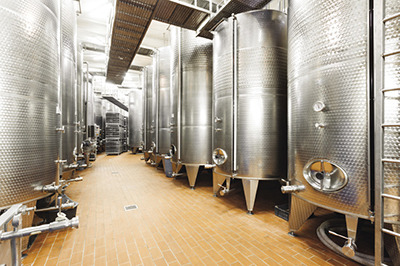
4. Green Precision Cleaning
Industrial cleaning is hard work. It can also be expensive when you have to bring in chemicals to get things squeaky. Enter “Green Precision Cleaning,” which uses the nitrogen bubbles in water instead. The bubbles act as a scrubbing agent to clean equipment. Goddard Space Flight Center scientists developed this system for cleaning tubing and piping that significantly reduces cost and carbon consumption. Deionized water (or water that has been treated to remove most of its mineral ions) takes the place of costlier isopropyl alcohol (IPA) and also leaves no waste, which cuts out the pricey process of disposal. The cleaning system quickly and precisely removes all foreign matter from tubing and piping.

5. Self-Contained Device to Isolate Biological Samples
When it comes to working in space, smaller is always better. Innovators at our Johnson Space Center have developed a self-contained device for isolating microscopic materials like DNA, RNA, proteins, and cells without using pipettes or centrifuges. Think of this technology like a small briefcase full of what you need to isolate genetic material from organisms and microorganisms for analysis away from the lab. The device is also leak-proof, so users are protected from chemical hazards—which is good news for astronauts and Earth-bound scientists alike.
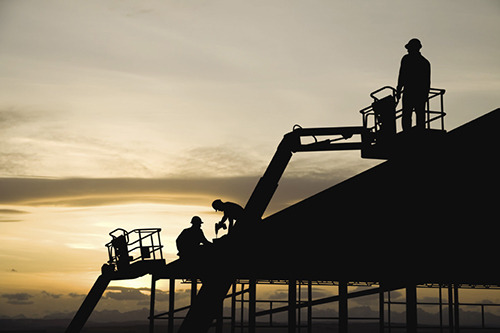
6. Portable, Rapid, Quiet Drill
When it comes to “bringing the boom,” NASA does it better than anyone. But sometimes, we know it’s better to keep the decibels low. That’s why innovators at NASA’s Jet Propulsion Laboratory have developed a new handheld drilling device, suitable for a variety of operations, that is portable, rapid and quiet. Noise from drilling operations often becomes problematic because of the location or time of operations. Nighttime drilling can be particularly bothersome and the use of hearing protection in the high-noise areas may be difficult in some instances due to space restrictions or local hazards. This drill also weighs less than five pounds – talk about portable power.

7. Damage Detection System for Flat Surfaces
The ability to detect damage to surfaces can be crucial, especially on a sealed environment that sustains human life or critical equipment. Enter Kennedy Space Center’s damage detection system for flat composite surfaces. The system is made up of layered composite material, with some of those layers containing the detection system imbedded right in. Besides one day potentially keeping humans safe on Mars, this tech can also be used on aircrafts, military shelters, inflatable structures and more.

8. Sucrose-Treated Carbon Nanotube and Graphene Yarns and Sheets
We all know what a spoonful of sugar is capable of. But, who knew it could help make some materials stronger? Innovators at NASA’s Langley Research Center did! They use dehydrated sucrose to create yarns and woven sheets of carbon nanotubes and graphene.
The resulting materials are lightweight and strong. Sucrose is inexpensive and readily available, making the process cost-effective. Makes you look at the sweet substance a little differently, doesn’t it?

9. Ultrasonic Stir Welding
NASA scientists needed to find a way to friction weld that would be gentler on their welding equipment. Meet our next tech, ultrasonic stir welding.
NASA’s Marshall Space Flight Center engineers developed ultrasonic stir welding to join large pieces of very high-strength, high-melting-temperature metals such as titanium and Inconel. The addition of ultrasonic energy reduces damaging forces to the stir rod (or the piece of the unit that vibrates so fast, it joins the welding material together), extending its life. The technology also leaves behind a smoother, higher-quality weld.

10. A Field Deployable PiezoElectric Gravimeter (PEG)
It’s important to know that the fuel pumping into rockets has remained fully liquid or if a harmful chemical is leaking out of its container. But each of those things, and the many other places sensors are routinely used, tends to require a specially designed, one-use device.
That can result in time-consuming and costly cycles of design, test and build, since there is no real standardized sensor that can be adapted and used more widely.
To meet this need, the PiezoElectric Gravimeter (PEG) was developed to provide a sensing system and method that can serve as the foundation for a wide variety of sensing applications.

See anything your business could use? Did anything inspire you to start your own company? If so, head to our website at technology.nasa.gov to check them out.
When you’ve found what you need, click, “Apply Now!” Our licensing system, ATLAS, will guide you through the rest.
If the items on this round-up didn’t grab you, that’s ok, too. We have hundreds of other technologies available and ready to license on our website.
And if you want to learn more about the technologies already being used all around you, visit spinoff.nasa.gov.
Make sure to follow us on Tumblr for your regular dose of space: http://nasa.tumblr.com
10 Technologies That Are Changing the Game
Earlier this year, we hosted a Game Changing Technology Industry Day for the aerospace industry, and in October our engineers and technologists visited Capitol Hill showcasing some of these exciting innovations. Check out these technology developments that could soon be making waves on Earth and in space.
1. Wearable technology
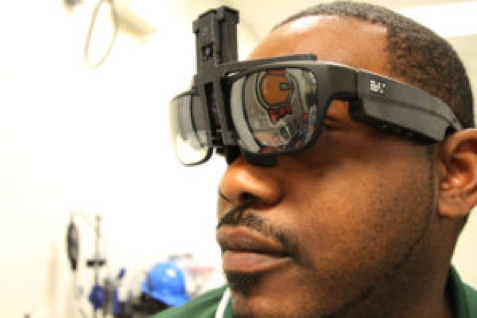
With smartwatches, glasses, and headsets already captivating users around the world, it’s no surprise that the next evolution of wearable technology could be used by first responders at the scene of an accident or by soldiers on a battlefield. The Integrated Display and Environmental Awareness System (IDEAS) is an interactive optical computer that works for smart glasses.

It has a transparent display, so users have an unobstructed view even during video conferences or while visualizing environmental data.

And while the IDEAS prototype is an innovative solution to the challenges of in-space missions, it won’t just benefit astronauts -- this technology can be applied to countless fields here on Earth.
2. Every breath they take: life support technologies
Before astronauts can venture to Mars and beyond, we need to significantly upgrade our life support systems. The Next Generation Life Support project is developing technologies to allow astronauts to safely carry out longer duration missions beyond low-Earth orbit.

The Variable Oxygen Regulator will improve the control of space suit pressure, with features for preventing decompression sickness. The Rapid Cycle Amine technology will remove carbon dioxide and humidity and greatly improve upon today’s current complex system.

3. 3-D printing (for more than just pizza)
New Advanced Manufacturing Technologies (AMT), such as 3-D printing, can help us build rocket parts more quickly and aid in building habitats on other planets.

These manufacturing initiatives will result in innovative, cost-efficient solutions to many of our planetary missions. Back in 2014, the International Space Station’s 3-D printer manufactured the first 3-D printed object in space, paving the way to future long-term space expeditions.

The object, a printhead faceplate, is engraved with names of the organizations that collaborated on this space station technology demonstration: NASA and Made In Space, Inc., the space manufacturing company that worked with us to design, build and test the 3-D printer.

4. Spacecraft landing gear
Large spacecraft entering the atmosphere of Mars will be traveling over five times the speed of sound, exposing the craft to extreme heat and drag forces. The Hypersonic Inflatable Aerodynamic Decelerator (HIAD) is designed to protect spacecraft from this environment with an inflatable structure that helps slow a craft for landing.

To get astronauts and other heavy loads to the surface safely, these components must be very strong. The inflatable consists of a material 15 times stronger than steel, while the thermal protection system can withstand temperatures over 1600°C.
5. From heat shield technology to firefighter shelters

For the Convective Heating Improvement for Emergency Fire Shelters (CHIEFS) project, we partnered with the U.S. Forest Service to develop safer, more effective emergency fire shelters for wild land firefighters.

Using existing technology for flexible spacecraft heat shields like HIAD, we are building and testing new fire shelters composed of stacks of durable, insulated materials that could help protect the lives of firefighters.

6. Robots and rovers
Real life is looking a bit more like science fiction as Human Robotics Systems are becoming highly complex. They are amplifying human productivity and reducing mission risk by improving the effectiveness of human-robot teams.

Our humanoid assistant Robonaut is currently aboard the International Space Station helping astronauts perform tasks.

A fleet of robotic spacecraft and rovers already on and around Mars is dramatically increasing our knowledge and paving the way for future human explorers. The Mars Science Laboratory Curiosity rover measured radiation on the way to Mars and is sending back data from the surface.

This data will help us plan how to protect the astronauts who will explore Mars.

Future missions like the Mars 2020 rover, seeking signs of past life, will demonstrate new technologies that could help astronauts survive on the Red Planet.

7. Robotic repairs
Currently, a satellite that is even partially damaged cannot be fixed in orbit. Instead, it must be disposed of, which is a lot of potential science lost.

Satellite Servicing technologies would make it possible to repair, upgrade, and even assemble spacecraft in orbit using robotics.

This can extend the lifespan of a mission, and also enable deeper space exploration.

Restore-L, set to launch in 2020, is a mission that will demonstrate the ability to grab and refuel a satellite.
8. Low-cost spacecraft avionics controllers
Small satellites, or smallsats, are quickly becoming useful tools for both scientists and industry. However, the high cost of spacecraft avionics—the systems that guide and control the craft—often limits how and when smallsats can be sent into orbit by tagging along as payloads on larger launches.

Using Affordable Vehicle Avionics (AVA) technology, we could launch many more small satellites using an inexpensive avionics controller. This device is smaller than a stack of six CD cases and weighs less than two pounds!
9. Making glass from metal
After a JPL research team of modern-day alchemists set about mixing their own alloys, they discovered that a glass made of metal had the wear resistance of a ceramic, was twice as strong as titanium, and could withstand the extreme cold of planetary surfaces, with temperatures below -150 degrees Fahrenheit.

Bulk Metallic Glass (BMG) gears would enable mechanisms to function without wasting energy on heaters. Most machines need to maintain a warmer temperature to run smoothly, which expends precious fuel and decreases the mission’s science return.

By developing gearboxes made of BMG alloys, we can extend the life of a spacecraft and learn more about the far reaches of our solar system than ever before. Plus, given their extremely high melting points, metallic glasses can be cheaply manufactured into parts by injection molding, just like plastics.
10. Lighter, cheaper, safer spacecraft fuel tanks
Cryogenic propellant tanks are essential for holding fuel for launch vehicles like our Space Launch System—the world’s most powerful rocket. But the current method for building these tanks is costly and time-consuming, involving almost a mile of welded parts.

Advanced Near Net Shape Technology, part of our Advanced Manufacturing Technologies, is an innovative manufacturing process for constructing cryotanks, using cylinders that only have welds in one area.

This makes the tank lighter, cheaper, and safer for astronauts, as there are fewer potentially defective welds.
Follow us on Tumblr for your regular dose of space: http://nasa.tumblr.com
Paving the Way for a Greener Future: Cathay Supports Hong Kong’s Sustainable Aviation Fuel Plan
Cathay backs Hong Kong’s push for sustainable aviation fuel (SAF), embracing policy recommendations to strengthen the city as a global green aviation hub. Continue reading Paving the Way for a Greener Future: Cathay Supports Hong Kong’s Sustainable Aviation Fuel Plan

As marketing overwhelms university life, it generates documents about fostering imagination and creativity that might just as well have been designed to strangle imagination and creativity in the cradle. No major new works of social theory have emerged in the United States in the last thirty years. We have been reduced to the equivalent of medieval scholastics, writing endless annotations of French theory from the seventies, despite the guilty awareness that if new incarnations of Gilles Deleuze, Michel Foucault, or Pierre Bourdieu were to appear in the academy today, we would deny them tenure. There was a time when academia was society’s refuge for the eccentric, brilliant, and impractical. No longer. It is now the domain of professional self-marketers. As a result, in one of the most bizarre fits of social self-destructiveness in history, we seem to have decided we have no place for our eccentric, brilliant, and impractical citizens. Most languish in their mothers’ basements, at best making the occasional, acute intervention on the Internet. It is proverbial that original ideas are the kiss of death for a proposal, because they have not yet been proved to work.
David Graeber

Innovation
She uses the stones of Go game very differently but nicely. They sometimes become money in shopping game or ingredients of cooking game. I'm very happy to see her playing and growing up freely.
イノベーション
その碁石の使い方良いね!ショッピングゲームのお金になったり、料理の材料になったり、のびのび発想力が嬉しいです!
Innovación
Ella usa las piedras del juego Go de manera muy diferente pero agradable. A veces se convierten en dinero en juegos de compras o en ingredientes de juegos de cocina. Estoy muy feliz de verla jugar y crecer libremente.

Break now
Sometimes I come up with good idea, upon relaxation.
Things that I learned in the past suddenly get combined, to find my own way.
一旦休憩
詰め込んだら、リラックス。
過去に学んだことが頭の中で結びついて、自分なりのやり方が見つかったりする。
Relájate ahora
A veces se me ocurre una buena idea, después de relajarme.
Las cosas que aprendí en el pasado de repente se combinan, para encontrar mi propio camino.

Free Style
Combination, not ONE but MANY.
Nothing shouldn’t be defined as one.
A novel combination may give you novel discovery or great achievement.
It shall be your own
( ^ω^ )
=========日本語 Japanese=======
その組み合わせイイネ♪
組み合わせは色々、人それぞれ!
「こうじゃないと絶対ダメ」ってこと、少ないですよね。
新しい組み合わせには新しい発見が隠れているし、それが「自分のカラー」になるかも。
( ^ω^ )
=======スペイン語 Spanish=======
Combinación, no UNO, sino MUCHOS.
Nada no debe definirse como uno.
Una combinación novedosa puede darle un descubrimiento novedoso o un gran logro.
Será tu propio color.
How are cities keeping up with the fastest growing industry in America?
http://davidtaran.co/blog/

Dive into the future at this subatlantic resort, where innovation meets the ocean’s edge! 🌊🔮
See more: https://comics.fiulo.com/tags/single/

In the world of craft, standards are everything. Who will rise to meet them? 🛠️🌟📐
See more: https://comics.fiulo.com/tags/single/

Boost your productivity with Microsoft Copilot Pro! In my latest article, I explore its key features, compare it to other tools, and share the benefits of using it. Don't miss out on this powerful AI tool! 💡👉🚀
See more: https://blog.fiulo.com/copilot-pro-released

OpenAI's GPT Store is here! Discover & build custom #GPTs tailored for any need: customer service, content creation, data analysis & more! Earn $$$ as a bot maker, or subscribe to use AI-powered assistants. 🛒💰🧠
See more: https://blog.fiulo.com/the-gpt-store-tailor-made-ai-tools-for-everything

👀 Early Access Alert! Get a sneak peek into the capabilities of Stable Video Diffusion. Join the waitlist for exclusive access and be a part of this exciting journey in AI.
Read the full story here: https://blog.fiulo.com/stable-video-diffusion

🌌 Step into a world where your creativity knows no bounds with Midjourney's groundbreaking new feature: the Style Tuner! 🎨 This innovative tool is more than just an enhancement; it's a revolution in digital art creation. With the Midjourney Style Tuner, you're not just making images; you're weaving your unique essence into every detail. 🖌️
Whether you're a seasoned artist or just starting out, the Style Tuner is designed to elevate your artistic expression. Tailor every aspect of your art with intuitive controls that delve deep into the aesthetic soul of your creations. From crafting vintage vibes to futuristic sleekness, or bringing to life surreal, dream-like imagery, the Style Tuner is your gateway to unparalleled customization. 🌟
But it's not just for individual artistry. Brands can now tell their stories more vividly, creating a consistent visual narrative that resonates across every touchpoint. Transform your brand's presence with a consistent style, enhancing engagement and storytelling in ways never before possible. 📈
Are you ready to become the maestro of your visual symphony? 🎼 My latest article delves deep into the wonders of the Midjourney Style Tuner, offering insights and inspirations to harness its full potential. Say goodbye to mundane visuals and hello to a universe where each creation is a testament to your unique vision and style. 🌠
Don’t just imagine your artistic journey; embark on it with Midjourney's Style Tuner. Dive into my detailed exploration of this game-changing tool and start shaping your digital destiny today! Check out the article here: https://blog.fiulo.com/style-tuning-in-midjourney

Shields up! 🛡️ OpenAI is pioneering a new frontier of AI legal protection with their Copyright Shield initiative. 🚀
This bold move promises to defend enterprise users against copyright claims stemming from AI-generated content. No more walking on eggshells for businesses exploring AI's potential! 😅
Check out my new blog post to get the inside scoop on how this shield works, who it protects, and the ripple effects it could have on AI innovation and copyright law. 💫
In this post, I break down the implications for content creators, developers, companies and look at it from a legal lens. Plus, how it stacks up against existing solutions. 🤓
There's a lot to unpack with this game-changing move, but one thing's for sure, OpenAI is resolute about enabling responsible AI creation. The future looks bright and secure! 🌞
So check out the link below and learn more about OpenAI's bold new Copyright Shield and how it might affect you! 🛡️ What do you think about this move?
🔗 https://blog.fiulo.com/unveiling-openais-copyright-shield
Quel outil (popup/leadpage) utiliser pour capturer des emails ?Bonjour, vous découvrirez dans cette vidéo des outils de captures d’emails pour vos campagnes de cold mailing.=> Pour une initiation au Growth Hacking : http://webinar.formationgrowthhacking.com=> Pour acheter la formation : http://promo.formationgrowthhacking.com#growthconsultant #growthentrepreneur #GrowthHack #GrowthHacker #GrowthHackers #growthhacking #growthhackingacademy #GrowthHackingAgency #growthhackingfrance #growthhackingmarketing #growthhackingstrategy #growthhackingstyle #GrowthHackingTips #GrowthHackingTools #GrowthHacks #GrowthMarketing #GrowthMarketingTips #GrowthMindset #emailing #massmailing #coldmailing #InboundMarketing #LocalBusiness #innovation #Scraping #innovationstrategy
Comment scraper efficacement une liste de commerçants physiques ?Bonjour à tous ! Nous vous invitons à découvrir cette vidéo, dans laquelle vous aurez accès à des outils vous permettant de scarper des business locaux. ^_- => Pour une initiation au Growth Hacking : http://webinar.formationgrowthhacking.com=> Pour acheter la formation : http://promo.formationgrowthhacking.com#growthconsultant #growthentrepreneur #GrowthHack #GrowthHacker #GrowthHackers #growthhacking #growthhackingacademy #GrowthHackingAgency #growthhackingfrance #growthhackingmarketing #growthhackingstrategy #growthhackingstyle #GrowthHackingTips #GrowthHackingTools #GrowthHacks #GrowthMarketing #GrowthMarketingTips #GrowthMindset #Hustle #Hustling #Inbound #InboundMarketing #LocalBusiness #innovation #Scraping #innovationstrategy
Quel service d’email automation devrais-je choisir ?Bonjour à tous ! Nous vous invitons à découvrir cette vidéo qui liste une série d’outils d’automatisation de mailing=> Pour une initiation au Growth Hacking : http://webinar.formationgrowthhacking.com=> Pour acheter la formation : http://promo.formationgrowthhacking.com#growthconsultant #growthentrepreneur #GrowthHack #GrowthHacker #GrowthHackers #growthhacking #growthhackingacademy #GrowthHackingAgency #growthhackingfrance #growthhackingmarketing #growthhackingstrategy #growthhackingstyle #GrowthHackingTips #GrowthHackingTools #GrowthHacks #GrowthMarketing #GrowthMarketingTips #GrowthMindset #mailingautomation #autoamtisation #emailing #massmailing #LocalBusiness #innovation #Scraping #innovationstrategy
Comment ajouter un CTA, tout en raccourcissant une url ?Bonjour à tous ! Voici des outils pour raccourcir vos urls qui sont parfois trop lognues pour les réseaux sociaux=> Pour une initiation au Growth Hacking : http://webinar.formationgrowthhacking.com=> Pour acheter la formation : http://promo.formationgrowthhacking.com#growthconsultant #growthentrepreneur #GrowthHack #GrowthHacker #GrowthHackers #growthhacking #growthhackingacademy #GrowthHackingAgency #growthhackingfrance #growthhackingmarketing #growthhackingstrategy #growthhackingstyle #GrowthHackingTips #GrowthHackingTools #GrowthHacks #GrowthMarketing #GrowthMarketingTips #GrowthMindset #reseauxsociaux #reseausocial #Inbound #InboundMarketing #LocalBusiness #innovation #Scraping #innovationstrategy
Quel est le meilleur service de Landing Page à l’heure actuelle ?Bonjour à tous ! VOici une liste d’outils pour fabriquer vos landing pages.=> Pour une initiation au Growth Hacking : http://webinar.formationgrowthhacking.com=> Pour acheter la formation : http://promo.formationgrowthhacking.com#growthconsultant #growthentrepreneur #GrowthHack #GrowthHacker #GrowthHackers #growthhacking #growthhackingacademy #GrowthHackingAgency #growthhackingfrance #growthhackingmarketing #growthhackingstrategy #growthhackingstyle #GrowthHackingTips #GrowthHackingTools #GrowthHacks #GrowthMarketing #GrowthMarketingTips #GrowthMindset #Hustle #Hustling #Inbound #InboundMarketing #LocalBusiness #innovation #Scraping #innovationstrategy
Quels sont les meilleurs SaaS referral Facebook, SMS, Whatsapp?Bonjour à tous ! AUjourd’hui nous présentons des outils pour développer le niveau refferal de votre tunnel marketing.=> Pour une initiation au Growth Hacking : http://webinar.formationgrowthhacking.com=> Pour acheter la formation : http://promo.formationgrowthhacking.com#growthconsultant #growthentrepreneur #GrowthHack #GrowthHacker #GrowthHackers #growthhacking #growthhackingacademy #GrowthHackingAgency #growthhackingfrance #growthhackingmarketing #growthhackingstrategy #growthhackingstyle #GrowthHackingTips #GrowthHackingTools #GrowthHacks #GrowthMarketing #GrowthMarketingTips #GrowthMindset #Hustle #Hustling #Inbound #InboundMarketing #LocalBusiness #innovation #referral #innovationstrategy
Quels sont les meilleurs outils pour effectuer un sondage ?Bonjour à tous ! Nous vous invitons à découvrir cette vidéo, dans laquelle vous aurez accès à des outils vous permettant de réaliser des sondages de façon simple et rapide.=> Pour une initiation au Growth Hacking : http://webinar.formationgrowthhacking.com=> Pour acheter la formation : http://promo.formationgrowthhacking.com#growthconsultant #growthentrepreneur #GrowthHack #GrowthHacker #GrowthHackers #growthhacking #growthhackingacademy #GrowthHackingAgency #growthhackingfrance #growthhackingmarketing #growthhackingstrategy #growthhackingstyle #GrowthHackingTips #GrowthHackingTools #GrowthHacks #GrowthMarketing #GrowthMarketingTips #GrowthMindset #Hustle #Hustling #Inbound #InboundMarketing #LocalBusiness #innovation #Scraping #innovationstrategy
Comment faire tourner des scripts H24, sans avoir son desktop allumé en permanence ?Bonjour à tous ! Vous vous êtes peut-être déjà trouvé dans la situation où il fallait laisser allumer votre PC pour faire tourner un script. Cela peut-être contraignant si vous n’avez qu’un seul ordinatuer. Cette vidéo pourrait vous aider à résoudre ce problème.=> Pour une initiation au Growth Hacking : http://webinar.formationgrowthhacking.com=> Pour acheter la formation : http://promo.formationgrowthhacking.com#growthconsultant #growthentrepreneur #GrowthHack #GrowthHacker #GrowthHackers #growthhacking #growthhackingacademy #GrowthHackingAgency #growthhackingfrance #growthhackingmarketing #growthhackingstrategy #growthhackingstyle #GrowthHackingTips #GrowthHackingTools #GrowthHacks #GrowthMarketing #GrowthMarketingTips #GrowthMindset #proy #vps #Inbound #InboundMarketing #LocalBusiness #innovation #Scraping #script
